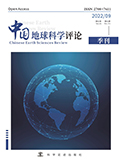

藏中谷露—当雄—羊八井断陷带作为亚东—谷露裂谷北段核心构造单元, 完整记录上新世以来沉积序列与地貌演化。地质调查显示, 其湖相泥岩、冲洪积砾石层及泉华堆积组合, 为青藏高原中部晚新生代环境变迁研究提供重要载体。上新世湖相沉积分布于吉达果南缘, 以灰黑色泥岩为主, 含介形虫、孢粉等微体化石, 指示稳定湖盆环境; 中更新世念青唐古拉山南麓发育冰碛—冰水沉积, 砾石分选磨圆中等, 反映冰川作用对沉积体系的改造; 晚更新世河流下切形成多级阶地与洪积扇, 揭示阶段性构造隆升。羊八井温泉钙华台地呈带状展布, 同位素测年显示形成于中晚更新世。沼泽泥炭序列保存全新世气候波动记录, 与青藏高原冰芯记录具有可比性。构造-气候耦合机制研究表明: 上新世稳定湖相沉积对应构造宁静期; 中更新世冰川沉积事件与全球冰期同步; 晚更新世阶地序列反映构造抬升速率超过侵蚀基准面下降的动力过程。该断陷带作为青藏高原中部“构造-气候敏感带”, 其沉积响应为揭示板块碰撞远程响应与气候协同作用提供关键约束。
Gulu-Dangxiong-Yangbajing Fault-Depression Zone in Central Tibet as the core structural unit of the northern segment of the Yadong-Gulu Rift, completely records the sedimentary sequence and geomorphic evolution since the Pliocene. Geological surveys indicate that its typical sedimentary assemblage, including lacustrine mudstone, alluvial-proluvial gravel layers, and travertine deposits, provides an important carrier for studying late Cenozoic environmental changes in central Tibet. Pliocene lacustrine deposits, mainly distributed in the southern margin of Jidaguo, consist predominantly of gray-black mudstone containing ostracods, sporopollen, and other microfossils, indicating a stable lake basin environment. Middle Pleistocene glacial-outwash deposits developed extensively on the southern foot of the Nyainqentanglha Mountains, with moderately sorted and rounded gravels, reflecting glacial modification of the sedimentary system. Late Pleistocene fluvial incision formed multi-level terraces and alluvial fans, revealing episodic tectonic uplift. The Yangbajing hot spring travertine terraces exhibit zonal distribution, with isotopic dating indicating formation during the Middle-Late Pleistocene. Peat sequences in swamp deposits preserve Holocene climate fluctuation records, showing comparability with Tibetan Plateau ice core records. Studies on tectonic-climatic coupling mechanisms reveal that: stable Pliocene lacustrine deposits correspond to a tectonically quiescent period; Middle Pleistocene glacial sedimentary events were synchronous with global glaciations; and Late Pleistocene terrace sequences reflect dynamic processes where tectonic uplift rates exceeded erosion base level decline rates. As a “tectonic-climatic sensitive zone” in central Tibet, the sedimentary response of this fault-depression zone provides critical constraints for revealing the remote response to plate collision and climate synergistic effects.